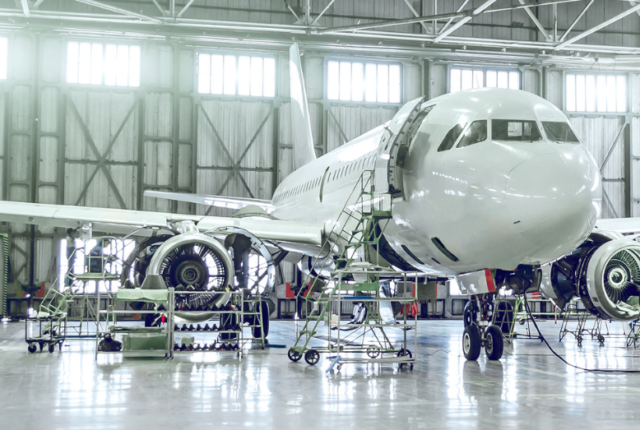Introduction to Aerospace Composites
Definition & Advantages
Aerospace composites are advanced materials formed by combining fibers (like carbon or glass) with a resin or matrix to create components with high strength-to-weight ratios, corrosion resistance, and durability. These materials significantly improve aircraft efficiency by lowering weight and enhancing fuel economy.
Key Materials
-
Carbon Fiber-Reinforced Polymers (CFRP): The most widely used composite, offering exceptional strength and reduced weight.
-
Ceramic Matrix Composites (CMC): Ideal for high-temperature environments like jet engines.
-
Thermoplastics and Hybrid Composites: Gaining attention for recyclability, rapid production, and lower processing costs.
Market Overview & Forecast
Market Size & CAGR
-
In 2024: ~USD 23.4 billion
-
By 2033: Projected to reach between USD 43–101.1 billion
-
CAGR: Varies between 6.6% and 12.2%, depending on methodology and segmentation
This reflects the strong global momentum in composite integration across various aerospace sectors.
Regional Insights
-
North America: Leading market, thanks to Boeing’s composite-rich aircraft (like the 787) and defense initiatives.
-
Asia-Pacific: Fastest-growing region due to increasing domestic aircraft manufacturing in China and India.
-
Europe: Significant adoption in Airbus platforms (A350, A320neo), emphasizing environmental compliance.
-
Middle East, Africa, Latin America: Emerging use cases tied to fleet modernization and airport expansions.
Market Segmentation
By Fiber Type
-
Carbon Fiber: Dominates due to superior strength-to-weight benefits.
-
Glass Fiber: Used for less demanding aerospace applications.
-
Aramid & Ceramic Fibers: Applied in defense and high-temperature use cases.
By Resin/Matrix Type
-
Thermoset Resins: Offer structural integrity but require autoclave curing.
-
Thermoplastic Resins: Provide recyclability, faster processing, and growing industry preference.
-
Advanced Matrices: Including CMCs and nanocomposites for extreme aerospace environments.
By Aircraft Type & Application
-
Commercial Aircraft: Largest market share, especially in wide-body and narrow-body jets.
-
Military Aircraft: Extensive use in stealth and combat aircraft, drones, and missile systems.
-
General Aviation & Business Jets: Seeking performance upgrades through lightweight parts.
-
Spacecraft and UAVs: Require highly reliable and lightweight structures for efficient propulsion and durability.
Key Growth Drivers
-
Fuel Efficiency and Carbon Reduction: Composites reduce aircraft weight by up to 20%, drastically lowering fuel costs and emissions.
-
Fleet Expansion: Increasing air travel and freight movement create strong demand for next-generation aircraft.
-
Defense Modernization: Military aircraft demand high-performance materials for agility, speed, and stealth.
-
Space Industry Boom: Satellites and spacecraft rely on composites for durability and launch efficiency.
-
Innovation in Urban Mobility: eVTOL aircraft and drones require ultra-light composites to operate effectively in urban airspace.
Technological Trends & Innovations
-
Automated Manufacturing: Use of AFP and ATL (automated tape laying) accelerates production and reduces labor costs.
-
Out-of-Autoclave Techniques: Lower capital investment and energy use, speeding up production.
-
Smart Composites: Embedded sensors enable real-time structural health monitoring.
-
3D Printed Composites: Additive manufacturing is being explored for aerospace-grade components.
-
Thermoplastic Integration: Thermoplastics are gaining ground for easier recyclability and cost-effective processing.
Competitive Landscape
Key players driving the aerospace composites market include:
-
Hexcel Corporation
-
Toray Industries Inc.
-
Teijin Limited
-
Solvay SA
-
Mitsubishi Chemical Corporation
-
Spirit AeroSystems
-
Gurit
-
SGL Carbon
-
BASF SE
-
Honeywell International
-
DuPont
These companies focus on innovations in materials science, scalable automation, and strategic aerospace partnerships to stay competitive.
SWOT Analysis
Strengths
-
High performance-to-weight ratio
-
Fuel efficiency and sustainability
-
Wide applicability across civil, defense, and space sectors
Weaknesses
-
Expensive material and manufacturing process
-
Complicated repair procedures and inspections
-
Long certification and development cycles
Opportunities
-
Rising aircraft production and fleet upgrades
-
Expansion of UAVs and space missions
-
New markets in Asia-Pacific and Middle East
-
Recycling and circular economy innovations
Threats
-
Regulatory risks regarding safety and emissions
-
Competitive threats from lightweight metals
-
Supply chain constraints (carbon fiber shortages)
-
Slower adoption due to high cost barriers
Future Outlook & Opportunities
The future of the aerospace composites market is bright, driven by:
-
Sustainable materials: The demand for bio-based and recyclable composites will grow.
-
Urban Air Mobility (UAM): Drones and air taxis require strong, light, and compact materials.
-
Smart aircraft: Integration of intelligent materials with IoT and AI to enhance safety and maintenance.
-
Space innovation: Mars and lunar missions, satellite constellations, and private space travel will increase demand for high-performance composites.
-
Next-gen commercial aircraft: New models from Airbus, Boeing, Embraer, and others will feature even more composite structures.
Challenges Facing the Industry
High Material Costs
Carbon fiber and advanced resins remain expensive. Producers must innovate to lower costs through economies of scale and new manufacturing methods.
Complex Certification Processes
Aerospace authorities require rigorous testing and documentation. Getting composite parts certified can be time-consuming and costly.
Recycling and Sustainability
Thermoset composites are hard to recycle. Developing closed-loop recycling and biodegradable matrices is critical for long-term sustainability.
Skill Shortages
Composite fabrication requires specialized skills. Training programs and automation help, but finding experienced technicians remains a hurdle.
Future Outlook
Growth of Electric and Hybrid Aircraft
Emerging e-VTOL (electric vertical takeoff and landing) and hybrid-electric planes rely heavily on ultralight composites to maximize battery efficiency and range.
Increased Use in Space Missions
Private space companies and satellite constellations need lightweight, high-strength materials for launch vehicles and payload modules—driving composite demand.
Circular Economy Models
Expect to see expanded efforts in recycling and reuse of composite scrap. Chemical recycling and thermoplastic composites will lead the way.
Digital Twin and AI
Digital models of composite parts combined with AI algorithms will optimize designs for weight, strength, and durability before manufacturing.
Conclusion
The aerospace composites market stands at a pivotal juncture—fueled by rising air travel, defense needs, and environmental pressures. Trends like automated manufacturing, thermoplastic adoption, and smart composites promise to lower costs and improve performance. Drivers such as fuel efficiency targets, regulatory mandates, and new electric aircraft programs ensure steady growth through 2033. Yet, challenges around material costs, recycling, and certification remain. As the industry invests in advanced materials, digital tools, and sustainable practices, aerospace composites will continue to revolutionize flight—making aircraft safer, greener, and more efficient for generations to come.
The aerospace composites market plays a critical role in shaping the next generation of aviation and space exploration. By offering unmatched advantages in weight reduction, fuel efficiency, and design flexibility, these materials have become essential to achieving modern aviation’s performance and sustainability goals.
As the industry continues to innovate in material science, manufacturing techniques, and sustainability, the use of carbon fiber, ceramic, thermoplastic, and hybrid composites will only grow. Aerospace companies that invest in advanced composites today will soar to new heights tomorrow, redefining the future of flight.
Get More Details : https://www.databridgemarketresearch.com/reports/global-aerospace-composites-market












